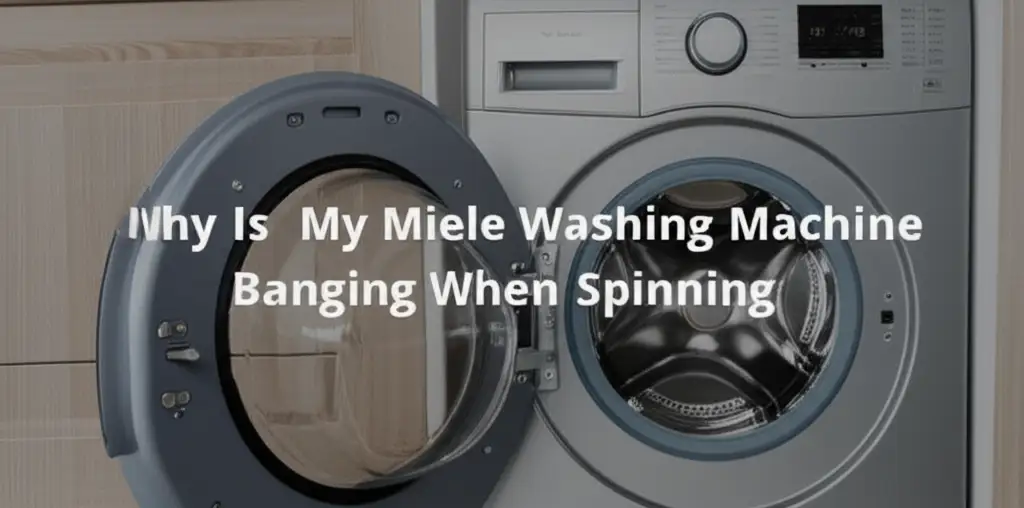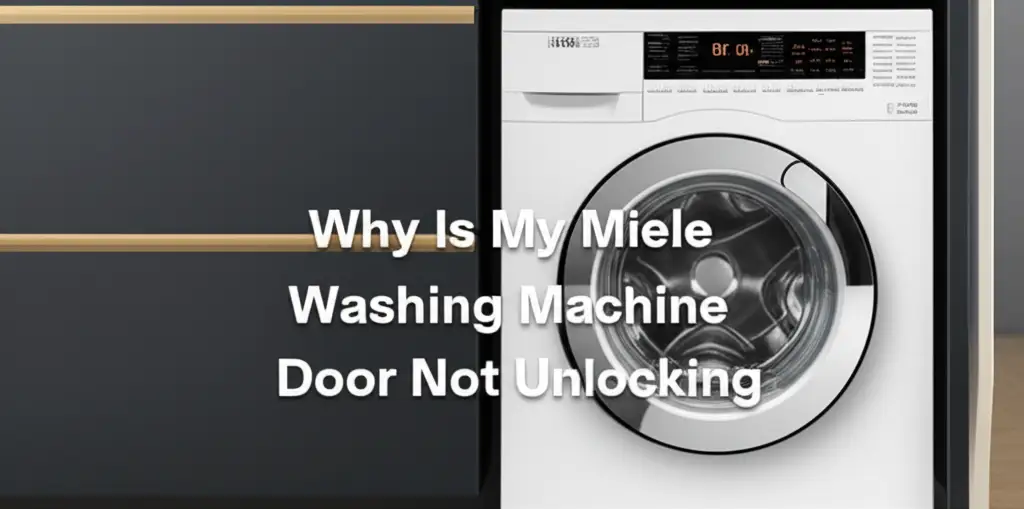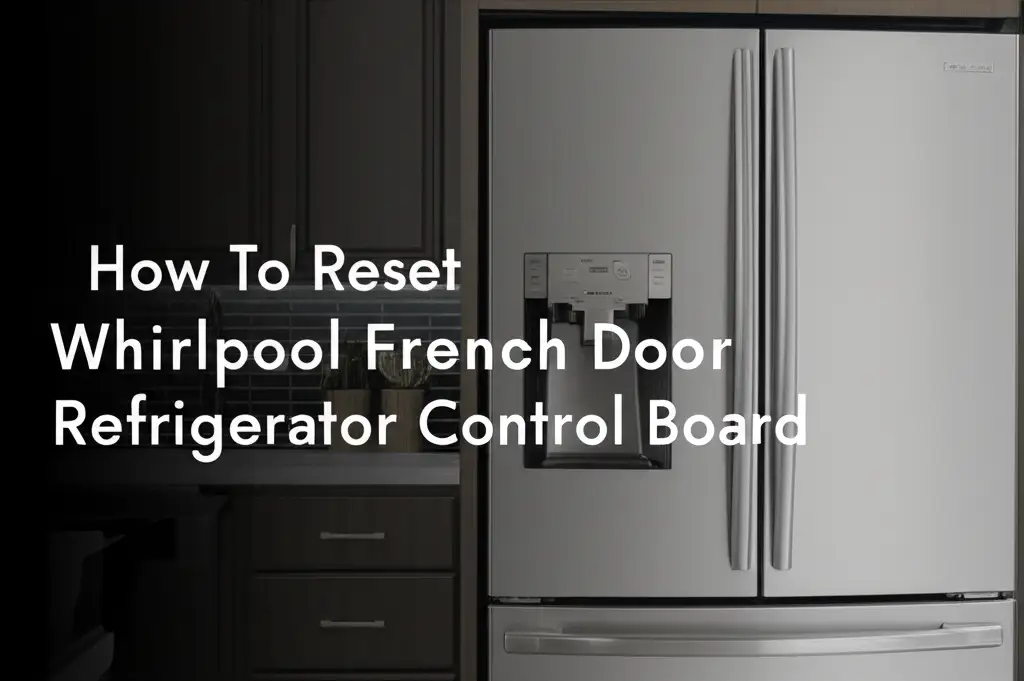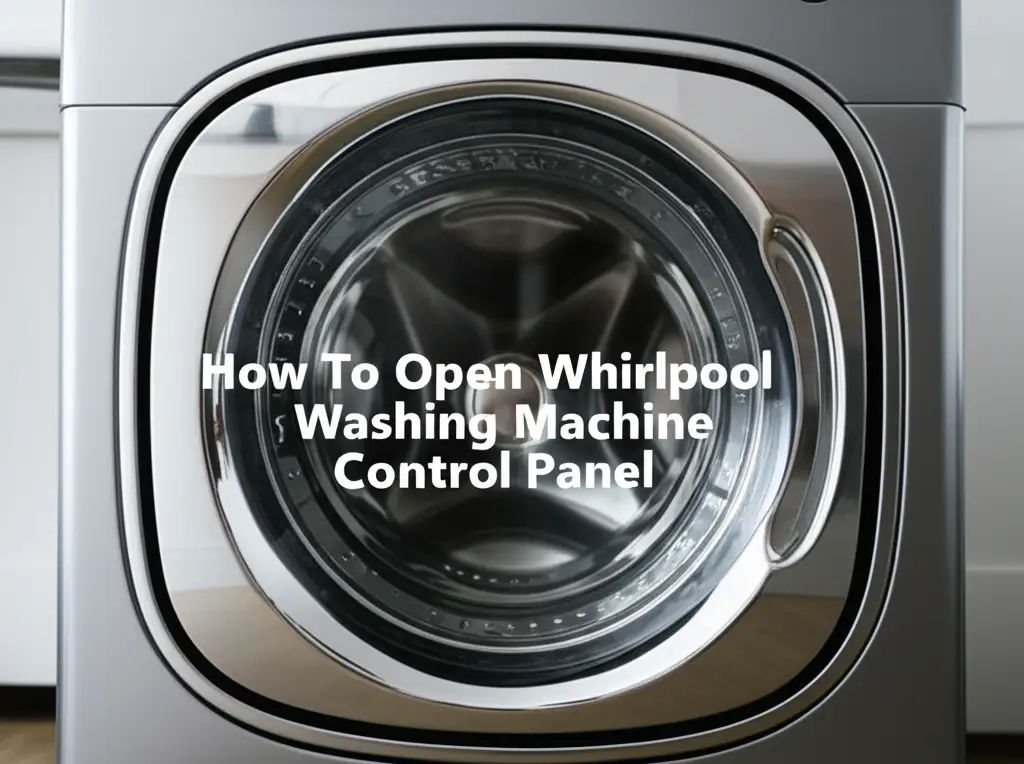· Katria Melrose · Home Appliance Repair · 17 min read
Why Is My Miele Washing Machine Banging When Spinning

Stop Your Miele Washing Machine Banging When Spinning
Hearing loud noises from your washing machine can be unsettling. A Miele washing machine banging when spinning is a common problem. It often indicates an imbalance or a worn part inside the appliance. I know how disruptive and worrisome this sound can be for anyone in their home. This issue impacts your laundry routine and suggests a potential need for attention.
This article will help you understand the common reasons for this banging noise. We will look at simple troubleshooting steps you can take yourself. We will also discuss when it is time to seek professional help. My goal is to guide you through finding a solution. This way, your Miele washing machine can run smoothly and quietly again.
Takeaway
- Check the Load: Ensure the laundry load is balanced and not overloaded.
- Inspect Leveling Feet: Make sure the machine stands level and stable on the floor.
- Look for Foreign Objects: Check the drum and drain pump filter for loose items.
- Assess Suspension Components: Examine shock absorbers and springs for damage or wear.
- Evaluate Drum Bearings: Listen for grinding noises, which signal worn bearings needing professional repair.
A Miele washing machine banging when spinning often happens because of an unbalanced load. It can also indicate damaged shock absorbers, worn drum bearings, or foreign objects in the machine. Less common reasons include motor issues or incorrect leveling.
Unbalanced Laundry Loads: A Common Culprit
One of the most frequent reasons a Miele washing machine bangs when spinning is an unbalanced load. Clothes can bunch up during the wash cycle. This creates a heavy spot in the drum. When the machine speeds up for the spin cycle, this uneven weight causes the drum to wobble. The wobbling then creates a banging noise. This is especially true with bulky items like blankets or towels.
An unbalanced load is not just noisy. It can also put stress on your machine’s components. Over time, this stress might lead to more serious damage. Many Miele machines have sensors to detect imbalance. They might stop or slow the spin cycle to try and redistribute the load. If the banging continues, you need to intervene. I find this issue quite common when I wash large bedding.
How to Fix an Unbalanced Load
Addressing an unbalanced load is often simple. You do not need special tools for this.
- Pause the Cycle: Stop the washing machine mid-cycle.
- Open the Door: Wait for the door to unlock safely.
- Rearrange Clothes: Manually redistribute the laundry inside the drum. Try to spread items evenly around the drum.
- Remove Excess Items: If the machine is too full, take out a few items. This helps distribute the weight better.
- Restart Cycle: Close the door and resume the spin cycle.
Always try to wash similar items together. Avoid washing a single heavy item by itself. Add a few towels or smaller items to balance the load. This simple practice prevents future banging issues. It also extends the life of your machine. This helps your Miele washing machine run quietly and effectively.
Damaged Shock Absorbers or Suspension Springs
Your Miele washing machine uses shock absorbers and suspension springs. These parts keep the drum stable during fast spin cycles. They absorb vibrations and movements. If these components wear out or break, the drum can move too freely. This causes it to hit the machine’s casing, leading to a loud banging noise. This issue is more common in older machines. Years of use can take a toll on these parts.
I have seen many cases where a worn shock absorber caused severe banging. The machine becomes much louder than usual during the spin. You might also notice the machine shaking or vibrating more violently. Checking these parts requires opening the machine’s casing. It is a more involved step than checking a load.
Identifying Worn Suspension Components
To check the shock absorbers and springs, follow these steps. Always unplug the machine before inspecting internal parts.
- Access Components: You need to remove the back or side panel of your Miele washing machine. The exact method varies by model. Consult your owner’s manual for specific instructions.
- Locate Parts: Find the shock absorbers and suspension springs. Shock absorbers look like car shock absorbers. Springs are usually at the top corners of the drum.
- Inspect for Damage:
- Shock Absorbers: Look for signs of oil leaks or physical damage. Push down on the drum. If it bounces excessively or feels loose, the absorbers might be faulty.
- Springs: Check for rust, stretching, or breaks. A broken spring cannot support the drum properly.
- Test Drum Movement: With the machine off and empty, push down firmly on the drum. It should move down smoothly and return to position with little bounce. If it feels loose or clunks, it confirms an issue.
Replacing shock absorbers or springs can be a DIY task for some. You can find replacement parts online or from Miele authorized dealers. If you are not comfortable with this repair, it is best to call a professional technician. A professional can quickly diagnose and fix this problem. They ensure your machine functions correctly and safely. Many do-it-yourselfers find success with these types of repairs if they follow guides carefully. You can find general guidance on appliance repairs at do it yourself washing machine.
Worn Drum Bearings: A Serious Concern
Worn drum bearings are a serious cause of a Miele washing machine banging when spinning. The drum bearings allow the inner drum to spin smoothly and quietly. Over time, these bearings can wear out. This happens due to constant use, heavy loads, or water leakage. When bearings fail, the drum no longer rotates properly. It can wobble, creating a loud banging or grinding noise, especially during the spin cycle. This noise often gets worse over time.
A failing bearing is not just a noise problem. It can lead to complete machine failure if ignored. Water leaks can also appear if the bearing seal fails. This issue often causes water to leak from the bottom of the machine, as discussed in why is my miele washing machine leaking from the bottom.
Diagnosing Failed Drum Bearings
Diagnosing worn drum bearings requires a specific test.
- Empty the Machine: Ensure the washing machine is empty.
- Open the Door: Open the machine door.
- Rotate the Drum: Grab the inner drum and try to move it up and down. Also, try to rotate it by hand.
- Listen and Feel:
- Grinding Noise: If you hear a grinding, rumbling, or scraping sound when you spin the drum, the bearings are likely faulty.
- Excessive Play: If the drum wiggles noticeably when you move it up and down, this also points to worn bearings.
- Banging: A loud banging noise during the spin cycle is the key symptom.
Replacing drum bearings is a complex repair. It often involves disassembling a significant part of the washing machine. This task often requires specialized tools and expertise. I highly recommend calling a qualified Miele service technician for this repair. Trying to fix it yourself without proper knowledge can cause more damage. It can also void your warranty. Getting professional help ensures the repair is done right. It also restores your Miele washing machine to optimal performance. This type of fix is rarely a quick DIY job.
Foreign Objects in the Drum or Pump
Sometimes, a loud banging noise is caused by something simple. Small items can escape from pockets or fall out of clothes. These items might include coins, keys, buttons, or even small toys. These objects can get trapped between the inner and outer drums. They can also get lodged in the drain pump or filter. When the machine spins, these objects can rattle or bang against the drum or other components. This creates a surprising amount of noise.
I once found a child’s small toy car causing a loud thumping noise in a washing machine. It was trapped right under the drum. Checking for foreign objects is one of the easiest first steps to take. It might save you from deeper troubleshooting.
How to Check for and Remove Foreign Objects
Follow these steps to inspect your Miele washing machine for stray items.
Inspect the Drum:
- Visual Check: Carefully look inside the drum. Use a flashlight to see into the holes of the inner drum. Check for anything unusual.
- Feel Around: Reach into the drum and feel around the edges and under the agitator (if applicable) or beneath the paddles. Small items can get stuck here.
- Between Drums: Shine a light into the gap between the inner and outer drums. Sometimes items fall into this space. You might need a pair of long tweezers or pliers to retrieve them.
Check the Drain Pump Filter: Many Miele washing machines have a drain pump filter. This filter traps debris before it enters the pump. It prevents clogs.
- Locate Filter: The filter is usually at the bottom front of the machine, behind a small access panel.
- Drain Water: Place a shallow tray and a towel under the filter cap. Slowly unscrew the cap to drain any residual water.
- Remove Debris: Fully remove the filter and clean it thoroughly. Look for any foreign objects caught in the filter or pump housing.
- Clean and Replace: Clean the filter and screw it back on tightly.
Examine the Pump Impeller: If objects are not in the filter, they might be in the pump impeller. This requires more disassembly.
- You might need to access the drain pump from the back or bottom of the machine.
- Be cautious when doing this. Ensure the machine is unplugged. Remove any objects obstructing the impeller.
Regularly checking pockets before washing clothes can prevent many of these issues. Cleaning the drain pump filter every few months is also good maintenance. This helps your machine run smoothly and quietly. You can learn more about cleaning your washing machine filter at how to clean washing machine filter.
Leveling Issues and Improper Installation
A Miele washing machine needs to be perfectly level. This ensures proper operation during all cycles, especially the high-speed spin cycle. If the machine is not level, it can rock or wobble. This causes the drum to bang against the casing. This issue is often noticeable from the very first use. It can also develop if the floor settles or if the machine is moved. Sometimes, loose leveling feet are the problem.
I have found that even a slight tilt can lead to significant noise. Proper installation is key for preventing banging. Make sure the machine sits firmly on the ground.
How to Check and Adjust Leveling Feet
Checking and adjusting the leveling feet is a quick and easy fix.
Locate Leveling Feet: Miele washing machines have adjustable feet. These are usually at each corner on the bottom of the machine.
Test Stability: Push down on each corner of the machine. It should feel firm and not rock. If it wobbles, it is not level.
Use a Level: Place a spirit level on top of the washing machine. Check both front-to-back and side-to-side.
Adjust Feet:
- Tilt the machine slightly to access the feet.
- Loosen the locking nuts on the adjustable feet.
- Turn the feet clockwise to lower the machine. Turn them counter-clockwise to raise it.
- Adjust until the machine is perfectly level.
- Tighten the locking nuts firmly against the machine body. This prevents the feet from moving.
Check the Floor: Ensure the floor beneath the machine is sturdy and even. A weak or uneven floor can cause vibrations. If the floor is the issue, you might need to place a piece of plywood or a leveling mat under the machine. This provides a stable base.
Correct leveling reduces noise. It also prevents undue stress on the internal components. This simple adjustment can save you from more complex repairs later on. It keeps your Miele machine performing at its best.
Motor or Pulley Problems
While less common, issues with the motor or its components can cause a Miele washing machine to bang when spinning. The motor powers the drum’s rotation. If the motor itself is faulty, it might produce unusual noises, including banging or grinding. Sometimes, the motor mounts can become loose or damaged. This allows the motor to shift, causing it to hit the machine’s frame.
Another related component is the motor pulley. This pulley connects the motor to the drive belt, which turns the drum. If the pulley is loose, bent, or damaged, it can cause the belt to slip or make a banging sound as it rotates unevenly. These issues are typically more pronounced during high-speed spinning.
Diagnosing Motor and Pulley Issues
Diagnosing motor or pulley problems often requires a professional. However, you can do some initial checks.
- Listen Carefully: Listen for the source of the banging. Does it sound like it comes from the bottom or back of the machine where the motor is located?
- Inspect Motor Mounts: Unplug the machine. Remove the back panel. Check the bolts securing the motor to its mounts. Are they loose? Tighten them if they are. Look for any cracks or damage on the mounts themselves.
- Examine the Pulley and Belt:
- With the back panel off, locate the motor pulley and drive belt.
- The pulley should be firmly attached to the motor shaft. Try to wiggle it. If it moves, it might be loose or damaged.
- Check the drive belt for fraying, cracks, or looseness. A worn belt can slip and cause irregular drum movement, leading to banging.
- Manually rotate the drum to observe the belt and pulley movement. Look for any wobbling or unusual alignment.
Caution: Working with electrical components and heavy parts like motors requires care. If you find loose mounts, you can try tightening them. For a faulty motor or a damaged pulley, replacement is often necessary. These repairs are best left to a certified Miele technician. They have the proper tools and knowledge to handle such intricate fixes safely and effectively. A professional diagnosis ensures the correct part is replaced. This avoids further issues.
Drain Pump Issues and Debris
A Miele washing machine banging when spinning can sometimes be linked to the drain pump. The drain pump removes water from the drum. It runs during the drain and spin cycles. If foreign objects or debris get into the pump, they can cause it to make noise. This noise might sound like rattling, grinding, or even banging. The pump impeller, which is a small fan-like component, can hit against lodged debris. This causes the banging sound.
I have seen cases where small items like hairpins or buttons bypass the filter. They can then get stuck in the pump. This directly impacts the machine’s ability to drain and spin quietly. If your machine is also struggling to drain water, this is a strong indicator of a pump issue. Problems with draining and spinning are common across different washing machine brands, such as those discussed in why is my GE washing machine not draining and spinning.
Troubleshooting the Drain Pump
If you suspect your drain pump, follow these steps to check it.
- Access the Drain Pump Filter: This is the easiest place to start. As mentioned earlier, the filter is usually at the bottom front of the machine. Place a shallow pan and towels underneath. Slowly unscrew the cap to drain residual water.
- Clear Debris: Once the water is drained, remove the filter completely. Inspect it for any trapped objects like coins, lint, or small pieces of fabric. Clean the filter under running water.
- Check the Impeller: With the filter removed, you can usually see the pump impeller. Use a flashlight. Reach in carefully (with the machine unplugged!) and check if the impeller spins freely. Feel for any obstructions around it. Remove any debris you find.
- Run a Test Cycle: After cleaning the filter and checking the impeller, reinsert the filter tightly. Run a short rinse and spin cycle to see if the banging noise stops.
If the pump itself is faulty, it might not just make noise. It could also fail to drain water properly. In such cases, you might need to replace the drain pump. Replacing a drain pump can be a DIY task for some. You need to access it, usually from the back or bottom of the machine. If you are unsure, calling a professional is always the best option. They can correctly diagnose if the pump is the true cause. They can also perform the replacement safely.
Installation Issues and Transit Bolts
Sometimes, the banging noise from a Miele washing machine has nothing to do with internal parts failing. It relates to the initial installation. Specifically, if the transit bolts were not removed. Transit bolts (also called shipping bolts or shipping rods) are crucial during transport. They secure the drum in place. This prevents damage to the internal components while the machine is moved. These bolts must be removed before you use the washing machine.
If these bolts remain in place, the drum cannot move freely. It will bang against the bolts or the machine’s casing. This causes extreme noise and vibration during the spin cycle. This issue often results in immediate and very loud banging from the first use. I have seen many people forget this step. It is an easy oversight that causes significant issues.
Checking and Removing Transit Bolts
Checking for and removing transit bolts is simple.
- Locate the Bolts: Transit bolts are typically found at the back of the washing machine. They are usually large bolts with plastic spacers or covers. Your Miele owner’s manual will show their exact location. Most machines have three or four.
- Inspect and Remove: Look for these bolts. If they are still there, use a wrench to unscrew them. Pull them out along with any plastic spacers.
- Store Bolts: Keep the transit bolts in a safe place. You will need them if you ever move the washing machine again. This prevents damage during relocation.
- Install Blanking Plugs: Miele machines usually come with plastic blanking plugs. These plugs fill the holes left by the transit bolts. Insert these plugs after removing the bolts.
Important Note: Never operate your Miele washing machine with the transit bolts still installed. Doing so can cause severe damage to the drum, bearings, and suspension system. This damage often requires costly repairs. Always refer to your Miele installation guide. It provides specific instructions for your model. Proper installation prevents this common source of banging noise. It ensures your Miele machine operates as it should.
Troubleshooting Miele Washing Machine Banging Noises
When your Miele washing machine starts banging, a systematic approach helps find the cause. I always start with the easiest and most common issues first. This saves time and avoids unnecessary complex repairs. Remember, safety first: always unplug your machine before doing any internal inspection.
Here is a step-by-step guide to troubleshooting the banging noise:
Check for Unbalanced Load:
- Action: Pause the spin cycle. Open the door. Rearrange clothes evenly. Remove very heavy items if overloaded.
- Why: This is the most common and easiest fix.
- Outcome: If the noise stops, the load was the problem.
Verify Leveling:
- Action: Use a spirit level on top of the machine. Push down on each corner to check for wobbling. Adjust the leveling feet as needed. Tighten the lock nuts.
- Why: An unlevel machine will always vibrate and bang.
- Outcome: A stable machine means proper leveling.
Inspect for Foreign Objects:
- Action: Look inside the drum and between the inner and outer drums with a flashlight. Check the drain pump filter and impeller for trapped items.
- Why: Loose items cause rattling and banging against the drum or pump.
- Outcome: Removing objects removes the noise source.
Examine Transit Bolts:
- Action: Check the back of the machine for transit bolts. If present, remove them and install the plastic blanking plugs.
- Why: Forgotten transit bolts severely restrict drum movement, causing loud banging from the start.
- Outcome: Correct installation ensures free drum movement.
Assess Shock Absorbers and Springs:
- Action: Unplug the machine. Remove the back or side panel. Inspect shock absorbers for leaks or damage. Check springs for breaks or stretching. Push down on the drum to feel for excessive bounce.
- Why: Worn suspension parts allow the drum to hit the casing.
- Outcome: You might need to replace these parts if they are damaged.
Test for Worn Drum Bearings:
- Action: With an empty machine, try to move the drum up and down. Spin the drum by hand and listen for grinding or rumbling.
- Why: Bad bearings cause grinding noises and excessive drum play.
- Outcome: This is a complex repair that usually requires a professional.
Consider Motor/Pulley Issues:
- Action: Unplug the machine. Remove the back panel. Check motor mounts for looseness. Inspect the motor pulley and drive belt for damage or misalignment.
- Why: These parts affect drum rotation and can cause banging if faulty.
- Outcome: These repairs often require professional help.
By following this sequence, you can systematically identify the cause of the banging noise. Remember to consult your Miele owner’s manual for specific diagrams and instructions for your model. If you are unsure at any point, do not hesitate to call a certified Miele service technician. Professional help ensures a safe and effective repair. This helps your Miele washing machine function correctly for years.





